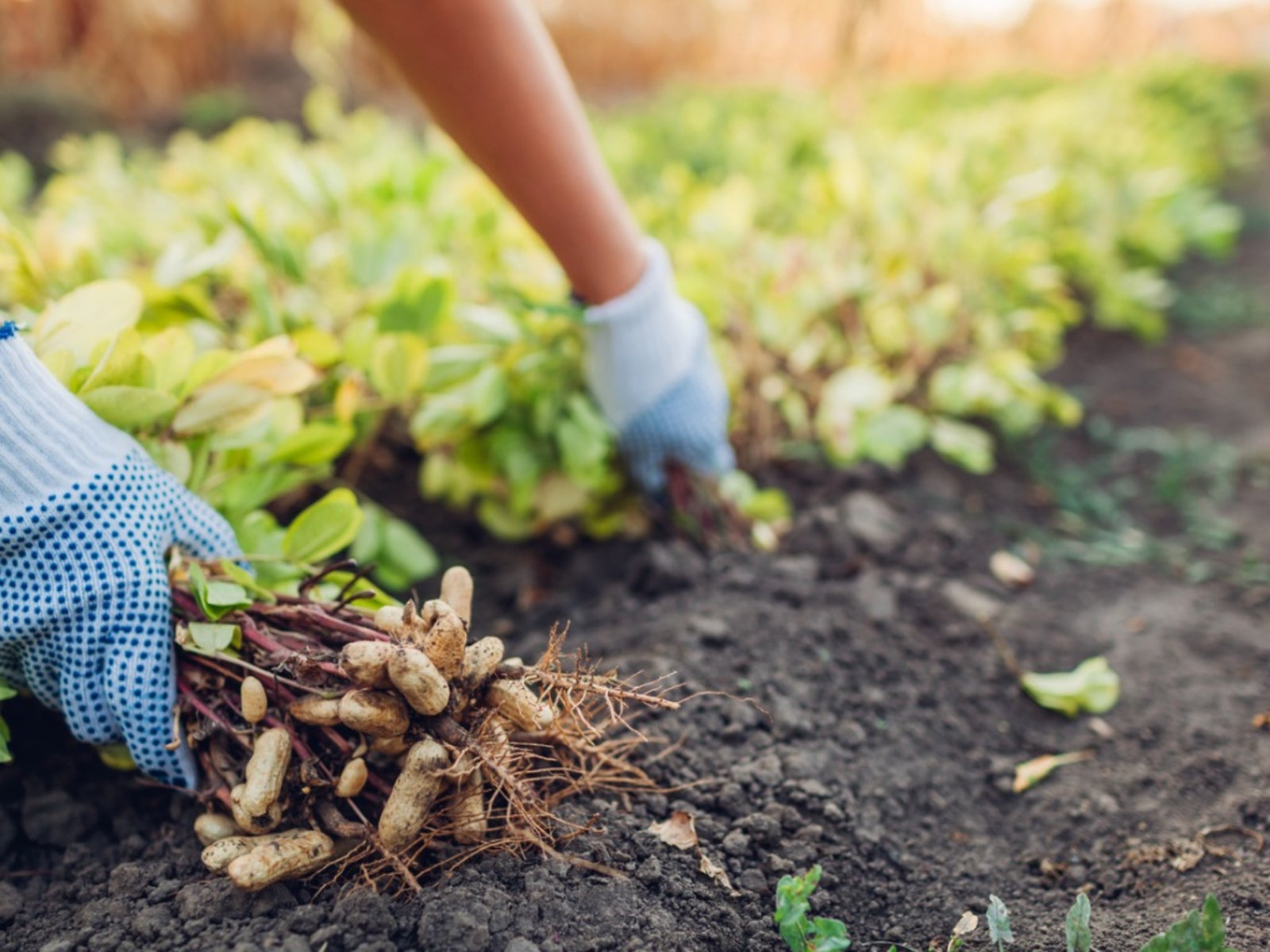Harvesting Peanuts: When And How Are Peanuts Harvested In Gardens


Peanuts are members of the legume family, along with beans and peas. The fruit they produce is actually a pea rather than a nut. The plants have a unique and interesting way of developing. After the flowers are fertilized, they create a peg that extends downward from the flower's ovary. The peg grows from the ovary down into the soil where the peanuts form. Once mature, you can begin harvesting peanuts. Let's learn more about peanut harvest time, including how and when to dig up peanuts in the garden.
When to Dig up Peanuts
Peanut harvest time is 90 to 110 days after planting for boiling types and 130 to 150 days after planting for roasting varieties. Normally, you can harvest peanuts in fall when the leaves begin to yellow. Pull a plant and check the pods before harvesting the entire crop though to be certain about the peanut harvest time. The pods are the best indication of when to dig up peanuts. The peanuts should nearly fill the pods. If the interior of the pod is dark in color, the peanuts are over mature for boiling but are still good for dry roasting. Harvest peanuts immediately if the plants have lost most of their leaves or the hulls don't have a firm attachment to the plant.
How are Peanuts Harvested?
So once you know when to dig up peanuts, you need to answer the question, “How are peanuts harvested?”. Loosen the soil around the plants with a spade or garden fork before harvesting peanuts. Pull up the plants and shake the excess soil from the roots, leaving the pods attached. Check the soil to make sure you aren't leaving any pods behind. Peanuts need to dry for three or four weeks before you prepare and store them. Hang the plants in a warm, dry location and protect them from direct sunlight. After two weeks, brush off any remaining soil and remove the pods from the roots. Lay them out in a single layer on a flat surface and allow them to dry for another week or two. High humidity during the drying period encourages mold.
Storing and Preparing Harvested Peanuts
Store raw peanuts in a well-ventilated area in mesh bags, where they'll keep for several months if properly dried and kept safe from rodents. Roast peanuts in a single layer on a cookie sheet in a 350 degrees Fahrenheit oven (177 C.). Cooking time depends on the moisture in the nuts, but they are usually ready in 13 to 18 minutes. Store roasted peanuts in air-tight containers. For extended storage, place the nuts in the refrigerator for up to 12 months. Boil peanuts with kosher salt in just enough water to cover them for three hours. Stir the peanuts occasionally and add water as necessary. Boiled peanuts are best enjoyed while still warm.
Sign up for the Gardening Know How newsletter today and receive a free copy of our e-book "How to Grow Delicious Tomatoes".

Jackie Carroll has written over 500 articles for Gardening Know How on a wide range of topics.